Fleurs du Mal Magazine


Or see the index
Pour la première fois en France depuis 1953, le Centre Pompidou consacre une exposition au cubisme au travers d’un vaste panorama de l’histoire du mouvement à Paris entre 1907 et 1917.
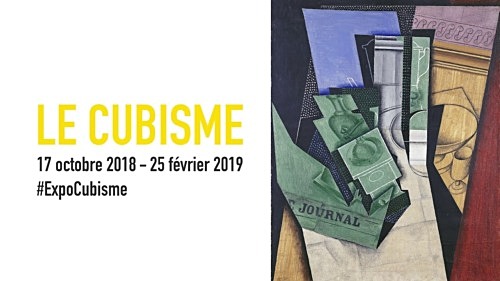
L’originalité du projet consiste à élargir la vision traditionnellement concentrée sur les grands noms du mouvement, Georges Braque, Juan Gris, Fernand Léger et Pablo Picasso, aux cubistes secondaires, comme Gleizes et Metzinger, ou différents tels Robert et Sonia Delaunay, Marcel Duchamp ou Francis Picabia, qui exposaient dans les salons officiels parisiens lorsque les pionniers réservaient leurs créations expérimentales à un seul jeune marchand inconnu, Daniel-Henry Kahnweiler.
 Riche de trois cents œuvres et de documents significatifs de son rayonnement, la présentation s’articule chronologiquement en quatorze chapitres où se détachent des chefs-d’œuvre comme le Portrait de Gertrude Stein (1905-1906) ou ceux d’Ambroise Vollard (1909) et de Daniel-Henry Kahnweiler (1910) par Picasso et des ensembles de peintures et de sculptures, jamais réunies. Elles mettent en valeur l’évolution à rebondissements du cubisme, remontant aux sources primitivistes (avec des sculptures tribales collectionnées par les artistes), et à la fascination des cubistes pour Gauguin et Cézanne. Elles reflètent la progression formelle du mouvement, d’une première étape cézannienne (avec la présence de l’exceptionnelle nature morte de Picasso, Pains et compotier sur une table, 1909) vers une transcription analytique hermétique (1910-1912) transformée en version plus synthétique (1913-1917), qui marque le retour de la représentation et de la couleur.
Riche de trois cents œuvres et de documents significatifs de son rayonnement, la présentation s’articule chronologiquement en quatorze chapitres où se détachent des chefs-d’œuvre comme le Portrait de Gertrude Stein (1905-1906) ou ceux d’Ambroise Vollard (1909) et de Daniel-Henry Kahnweiler (1910) par Picasso et des ensembles de peintures et de sculptures, jamais réunies. Elles mettent en valeur l’évolution à rebondissements du cubisme, remontant aux sources primitivistes (avec des sculptures tribales collectionnées par les artistes), et à la fascination des cubistes pour Gauguin et Cézanne. Elles reflètent la progression formelle du mouvement, d’une première étape cézannienne (avec la présence de l’exceptionnelle nature morte de Picasso, Pains et compotier sur une table, 1909) vers une transcription analytique hermétique (1910-1912) transformée en version plus synthétique (1913-1917), qui marque le retour de la représentation et de la couleur.
 La part la plus révolutionnaire du cubisme – l’invention des papiers collés, des collages et des constructions de Braque, Picasso, Gris et Henri Laurens – est représentée par des grandes icônes de l’art du 20e siècle, comme la Nature morte à la chaise cannée de Picasso (1912) ou sa Guitare en tôle et fils de fer (1914). D’autres aspects illustrent l’importance et le prestige de la constellation cubiste : les liens avec la littérature sont retracés dans une salle dédiée aux critiques et aux poètes, incarnés par les portraits les plus marquants de Max Jacob ou d’Apollinaire, par le Douanier Rousseau et Marie Laurencin, les éditions Kahnweiler de livres cubistes, la collaboration entre les Delaunay et Blaise Cendrars autour de La Prose du Transsibérien en 1913, etc. La tragédie de la Grande Guerre (1914-1918) qui mobilise ou exile les artistes et leurs soutiens est retracée par des œuvres des artistes du front (Raymond Duchamp-Villon, Fernand Léger) ou de l’arrière parce qu’étrangers (Pablo Picasso, Cartes à jouer, verres, bouteille de rhum, « Vive la France », 1914-1915) qui témoignent de l’inévitable stérilisation du mouvement frappé par l’histoire (Marc Chagall, Les Portes du cimetière, 1917). La fin du parcours témoigne à la fois de la renaissance des rescapés comme Braque (La Musicienne, 1917-1918) et de l’influence exercée par le cubisme sur ses contemporains, comme Henri Matisse (Porte-fenêtre à Collioure, 1914) et ses héritiers abstraits (Piet Mondrian, Composition n°IV, 1914), Kasimir Malévitch, Croix noire, 1915 ou contestataires (Marcel Duchamp, Roue de bicyclette, 1913/1964), tous tributaires de la révolution cubiste.
La part la plus révolutionnaire du cubisme – l’invention des papiers collés, des collages et des constructions de Braque, Picasso, Gris et Henri Laurens – est représentée par des grandes icônes de l’art du 20e siècle, comme la Nature morte à la chaise cannée de Picasso (1912) ou sa Guitare en tôle et fils de fer (1914). D’autres aspects illustrent l’importance et le prestige de la constellation cubiste : les liens avec la littérature sont retracés dans une salle dédiée aux critiques et aux poètes, incarnés par les portraits les plus marquants de Max Jacob ou d’Apollinaire, par le Douanier Rousseau et Marie Laurencin, les éditions Kahnweiler de livres cubistes, la collaboration entre les Delaunay et Blaise Cendrars autour de La Prose du Transsibérien en 1913, etc. La tragédie de la Grande Guerre (1914-1918) qui mobilise ou exile les artistes et leurs soutiens est retracée par des œuvres des artistes du front (Raymond Duchamp-Villon, Fernand Léger) ou de l’arrière parce qu’étrangers (Pablo Picasso, Cartes à jouer, verres, bouteille de rhum, « Vive la France », 1914-1915) qui témoignent de l’inévitable stérilisation du mouvement frappé par l’histoire (Marc Chagall, Les Portes du cimetière, 1917). La fin du parcours témoigne à la fois de la renaissance des rescapés comme Braque (La Musicienne, 1917-1918) et de l’influence exercée par le cubisme sur ses contemporains, comme Henri Matisse (Porte-fenêtre à Collioure, 1914) et ses héritiers abstraits (Piet Mondrian, Composition n°IV, 1914), Kasimir Malévitch, Croix noire, 1915 ou contestataires (Marcel Duchamp, Roue de bicyclette, 1913/1964), tous tributaires de la révolution cubiste.
Avec le soutien exceptionnel du Musée national Picasso-Paris
L’exposition est coproduite avec le Kunstmuseum de Bâle
Expositions
Le cubisme
17 oct. 2018 – 25 févr. 2019 de 11h à 21h
Galerie 1 – Centre Pompidou, Paris
Centre Pompidou
Place Georges Pompidou, 75004 Paris
# Le Cubisme
Exposition Centre Pompidou
fleursdumal.nl magazine
More in: Art & Literature News, Art Criticism, Exhibition Archive, Gertrude Stein, Kubisme, Marcel Duchamp, Pablo Picasso, Piet Mondriaan, Sculpture
Pablo Picasso and Gertrude Stein. Few can be said to have had as broad an impact on European art in the twentieth century as these two cultural giants.
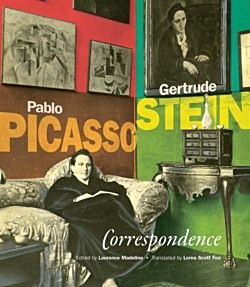 Pablo Picasso, a pioneering visual artist, created a prolific and widely influential body of work.
Pablo Picasso, a pioneering visual artist, created a prolific and widely influential body of work.
Gertrude Stein, an intellectual tastemaker, hosted the leading salon for artists and writers between the wars in her Paris apartment, welcoming Henri Matisse, Ernest Hemingway, and Ezra Pound to weekly events at her home to discuss art and literature.
It comes as no surprise, then, that Picasso and Stein were fast friends and frequent confidantes. Through Picasso and Stein’s casual notes and reflective letters, this volume of correspondence between the two captures Paris both in the golden age of the early twentieth century and in one of its darkest hours, the Nazi occupation through mentions of dinner parties, lovers, work, and the crises of the two world wars. Illustrated with photographs and postcards, as well as drawings and paintings by Picasso, this collection captures an exhilarating period in European culture through the minds of two artistic greats.
Correspondence
Pablo Picasso and Gertrude Stein
Paper $27.50
ISBN: 9780857425850
Published September 2018
Cloth $29.95
ISBN: 9781905422913
Published November 2008
Distributed for Seagull Books
Edited by Laurence Madeline.
Translated by Lorna Scott Fox.
390 pages
Biography and Letters
Illustrations
new books
Pablo Picasso and Gertrude Stein
fleursdumal.nl magazine
More in: - Book News, - Bookstores, Archive O-P, Archive S-T, Art & Literature News, Gertrude Stein, Pablo Picasso, Stein, Gertrude
Reflections on life and art from the legendary filmmaker-novelist-poet-genius.
 By the time he published The Difficulty of Being in 1947, Jean Cocteau had produced some of the most respected films and literature of the twentieth century, and had worked with the foremost artists of his time, including Proust, Gide, Picasso and Stravinsky.
By the time he published The Difficulty of Being in 1947, Jean Cocteau had produced some of the most respected films and literature of the twentieth century, and had worked with the foremost artists of his time, including Proust, Gide, Picasso and Stravinsky.
This memoir tells the inside account of those achievements and of his glittering social circle. Cocteau writes about his childhood, about his development as an artist, and the peculiarity of the artist’s life, about his dreams, friendships, pain, and laughter. He probes his motivations and explains his philosophies, giving intimate details in soaring prose. And sprinkled throughout are anecdotes about the elite and historic people he associated with.
Beyond illuminating a truly remarkable life, The Difficulty of Being is an inspiring homage to the belief that art matters.
Jean Cocteau (1889-1963) was a novelist, poet, filmmaker, artist and playwright. Born in a village just outside of Paris, he left home at fifteen and published his first volume of poetry, Aladdin’s Lamp, at nineteen. He circulated in the highest ranks of bohemian Paris, and counted Picasso and Proust among his close friends. His most famous works include the novel Les Enfants terribles and the films Beauty and the Beast and Orpheus. He was openly gay and at one time an opium addict. He died of a heart attack after being informed of the death of his friend, the singer Edith Piaf.
The Neversink Library champions books from around the world that have been overlooked, under appreciated, looked askance at, or foolishly ignored.
The Difficulty of Being
BY Jean Cocteau
Introduction by Geoffrey O’Brien
Translated by Elizabeth Sprigge
Publisher: Melville House
Reflections on life and art from the legendary filmmaker-novelist-poet-genius.
Part of The Neversink Library
Pages176
ISBN9781612192901
“One of the master craftsmen.” – Tennessee Williams
# more on website of The Neversink Library
fleursdumal.nl magazine
More in: - Book News, - Book Stories, Archive C-D, Archive C-D, Art & Literature News, AUDIO, CINEMA, RADIO & TV, Jean Cocteau, Pablo Picasso, THEATRE
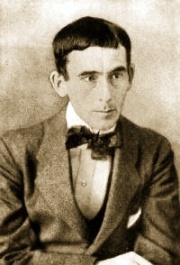 When I founded the Cabaret Voltaire, I was sure that there must be a few young people in Switzerland who like me were interested not only in enjoying their independence but also in giving proof of it.
When I founded the Cabaret Voltaire, I was sure that there must be a few young people in Switzerland who like me were interested not only in enjoying their independence but also in giving proof of it.
I went to Herr Ephraim, the owner of the Meierei, and said, “Herr Ephraim, please let me have your room. I want to start a night-club.” Herr Ephraim agreed and gave me the room. And I went to some people I knew and said, “Please give me a picture, or a drawing, or an engraving. I should like to put on an exhibition in my night-club.” I went to the friendly Zürich press and said, “Put in some announcements. There is going to be an international cabaret. We shall do great things.” And they gave me pictures and they put in my annoucements. So on 5th February we had a cabaret. Mademoiselle Hennings and Mademoiselle Leconte sang French and Danish chansons. Herr Tristan Tzara recited Rumanian poetry. A balalaika orchestra played delightful folk-songs and dances.
I received much support and encouragement from Herr M. Slodki, who designed the poster, and from Herr Hans Arp, who supplied some Picassos, as well as works of his own, and obtained for me pictures by his friends O. van Rees and Artur Segall. Much support also from Messrs. Tristan Tzara, Marcel Janco and Max Oppenheimer, who readily agreed to take part in the cabaret.
We organized a Russian evening and, a little later, a French one (works by Apollinaire, Max Jacob, André Salmon, A. Jarry, Laforgue and Rimbaud). On 26th February Richard Huelsenbeck arrived from Berlin and on 30th March we performed some stupendous Negro music (toujours avec la grosse caisse: boum boum boum boum – drabatja mo gere drabatja mo bonooooooooo -). Monsieur Laban was present at the performance and was very enthusiastic. Herr Tristan Tzara was the initiator of a performance by Messrs. Tzara, Huelsenbeck and Janco (the first in Zürich and in the world) of simultaneist verse by Messrs. Henri Barzun and Fernand Divoire, as well as a poème simultané of his own composition, which is reproduced on pages six and seven.
The persent booklet is published by us with the support of our friends in France, Italy and Russia. It is intended to present to the Public the activities and interests of the Cabaret Voltaire, which has as its sole purpose to draw attention, across the barriers of war and nationalism, to the few independent spirits who live for other ideals. The next objective of the artists who are assembled here is the publication of a revue internationale. La revue paraîtra à Zurich et portera le nom “Dada” (“Dada”). Dada Dada Dada Dada.
Zürich, 15th May 1916
Hugo Ball
(1886-1927)
From Cabaret Voltaire – Issue 1
fleursdumal.nl magazine
More in: Archive A-B, Archive A-B, Ball, Hugo, Dada, DADA, Dadaïsme, LITERARY MAGAZINES, Pablo Picasso

Picasso’s bicycle
The clutter was busy with itself,
dusty, rusty bits of calloused iron
struggled in the dinosaur maxim
of becoming dead skeletons
at the end of a so-so utilitarian life.
The effeminate ballroom
was not far behind, peeling
paint and whimpering plaster
on stained alabaster flooring,
the dream of luxury expiring.
The ghost of a danced waltz
in a Fin de Siècle stench spewed
to the vibration of tuneless strings.
Cobweb filled champagne bottles
sipped by drunk working class guests,
parched their sandy mouths thirsty.
The dirt filled the building slowly
travelling illegally on the back
of the Sirocco from the Levant
to leave an arid skin on every surface.
The walls bleached and blistered,
the fascias cracked and crumbled,
the Republic surrendered easily
to the upstart Spaniard’s charms
and chivvied slices of glory for him
in the ruined hypocrisy of its noblesse.
His work attested to a fall in standards
in slices of past glory, all ideas stolen
by the old devil’s goat-like desires.
The scrapyard sniggered in contempt
at the old fool, and the camera stared.
03.02.11
Vincent Berquez
Vincent Berquez is a London–based artist and poet
fleursdumal.nl magazine
More in: Archive A-B, Berquez, Vincent, Pablo Picasso, Vincent Berquez
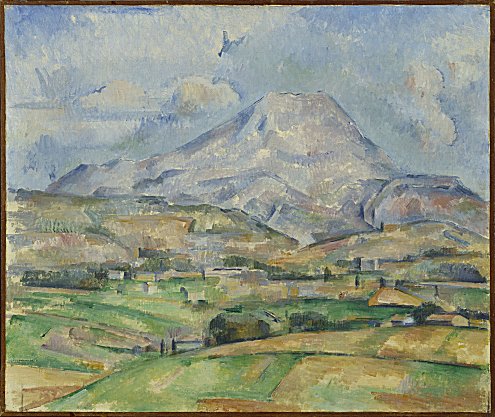
Paul Cézanne (1839-1906), La Montagne Sainte-Victoire, 1888, olieverf op doek, 83 x 72 cm,
collectie Stedelijk Museum Amsterdam, verworven met steun van de VVHK
GEMEENTEMUSEUM DEN HAAG
Cézanne – Picasso – Mondriaan
In nieuw perspectief
17 oktober 2009 t/m 24 januari 2010
Cézanne is de ‘vader van de moderne kunst’. Hij werd, hoe ironisch ook, vaak geweigerd op de Parijse salons, maar geldt nu als een van de belangrijkste kunstenaars van zijn periode. Picasso en Mondriaan zijn in zijn voetsporen getreden en gedrieën zijn zij verantwoordelijk voor misschien wel de meest beslissende ontwikkeling in de kunstgeschiedenis: het ontstaan van de abstracte kunst. Deze drie revolutionaire meesters zijn in het najaar van 2009 onderwerp van een grootse, internationale tentoonstelling in het Gemeentemuseum Den Haag. Hier wordt op spectaculaire wijze duidelijk gemaakt hoe de schilderkunst rond 1900 in een stroomversnelling raakte. Het resultaat is een boeiend verhaal waarin de toeschouwer wordt meegenomen van de zinnelijke en kleurrijke doeken van Cézanne via de felgekleurde – soms humoristische – werken van Picasso naar de uiterst subtiele schilderkunst van Mondriaan.
Geen andere laat-negentiende eeuwse kunstenaar had zoveel en zo’n blijvende invloed op zijn opvolgers als Paul Cézanne: met zijn subtiele kleurgevoel en zijn gedurfde composities brak hij een lans voor de generaties na hem. Voor het eerst sinds een halve eeuw is er weer werk van de Franse meester in ons land te zien, waaronder de wereldberoemde, sensuele Baadsters en de landschappen met de Mont Sainte-Victoire, bij het kleine dorpje Vauvenargues in de Franse Provence, als middelpunt.
Vanaf zijn komst naar Parijs, toen hij nauwelijks twintig jaar was, had Pablo Picasso tot aan het eind van zijn leven een grote bewondering voor Cézanne. Hij beschouwde zichzelf graag als diens (artistieke) zoon. Hij wilde zo graag in de voetsporen treden van zijn grote inspiratiebron, dat hij jaren later het kasteel, Château de Vauvenargues, betrok aan de voet van de Mont Sainte-Victoire. Het ging hem hierbij niet zozeer om een kunstzinnige navolging, maar echt om de fysieke plek waar Cézanne zijn werk had vervaardigd. Later, na zijn dood in 1973, zou Picasso er ook begraven worden.
Mondriaan was, vrijwel tegelijk met Picasso, ook bezig met zijn zoektocht naar het ideale kunstwerk. Hoewel hij uit de Nederlandse traditie komt waarin de Haagse School hoogtij vierde, had hij van jongs af aan veel interesse in de internationale schilderkunst. Zo haalde hij zijn opvatting van Kubisme in eerste instantie uit de krant. Een tentoonstelling over het kubisme in het Stedelijk Museum opende hem in 1911 definitief de ogen. Daar zag hij pas wat kubisme écht inhield en ontdekte hij de lijn die door Cézanne was ingezet en door Picasso werd doorgetrokken. Mondriaan besloot naar Parijs te gaan om de ontwikkelingen in de kunst met eigen ogen te zien. Van daaruit kwam hij een stap dichterbij de essentie van kleur en vorm. Het is voor het eerst dat de relatie van Mondriaan tot Picasso en Cézanne zo uitvoerig tegen het licht wordt gehouden.
Deze najaarstentoonstelling van het Gemeentemuseum geeft een uniek inzicht in de ontwikkeling van de moderne Westerse kunst waarin deze drie meesters ieder hun eigen baanbrekende rol hebben gespeeld. Met bijzondere bruiklenen van over de hele wereld, uit Washington (The National Gallery of Art), New York (The Metropolitan Museum of Modern Art) en Parijs (Centre Georges Pompidou) is deze tentoonstelling van grote kwaliteit.
Bij de tentoonstelling verschijnt een Nederlandstalige, rijk geïllustreerde catalogus met bijdragen van Hans Janssen, Franz-W. Kaiser, Brigitte Leal, Sylvie Patin, Anne Roquebert en Benno Tempel
Website Gemeentemuseum Den Haag
fleursdumal.nl magazine
More in: FDM Art Gallery, Pablo Picasso, Piet Mondriaan
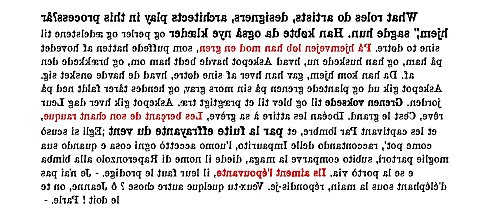
MUSEUM KRÖLLER-MÜLLER: HET MUSEUM
(Nationaal Park De Hoge Veluwe – Otterlo)
De verzameling van het museum is opgebouwd rond de omvangrijke collectie werken van Vincent van Gogh, één van de meest indrukwekkende overzichten van zijn oeuvre. Ook George Seurat, Pablo Picasso, Fernand Léger, Piet Mondriaan en veel andere kunstenaars zijn met belangrijke schilderijen vertegenwoordigd.
Vanaf 1961 neemt ook de beeldentuin een belangrijke plek in. Hier wordt een unieke collectie sculpturen getoond. De beeldentuin geeft een overzicht van de ontwikkelingen in de beeldhouwkunst vanaf de 19e eeuw tot heden. Een wandeling door de beeldentuin van 25 hectare is een ware ontdekkingstocht. Op soms onverwachte plekken staat hier een unieke verzameling met onder andere beelden van Auguste Rodin, Henry Moore, Barbara Hepworth, Richard Serra en Jean Dubuffet. Twee paviljoens uit de jaren ’60 van Aldo van Eyck en Gerrit Rietveld sieren de tuin: juweeltjes uit de jaren ’60 die hier opnieuw een plaats hebben gekregen. De tuin is het hele jaar open en ademt ieder seizoen een andere sfeer.
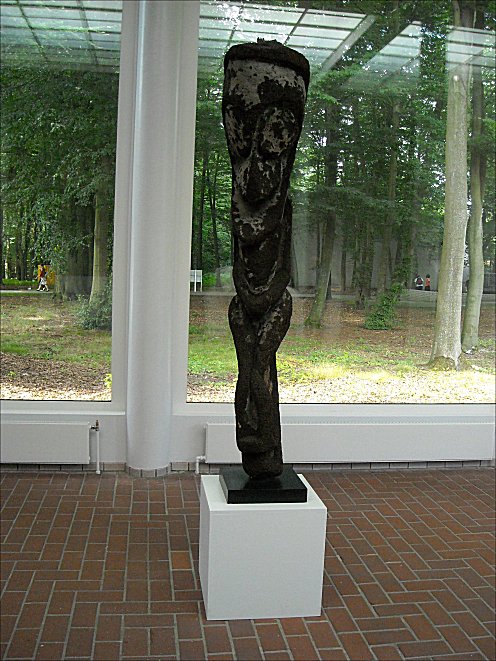




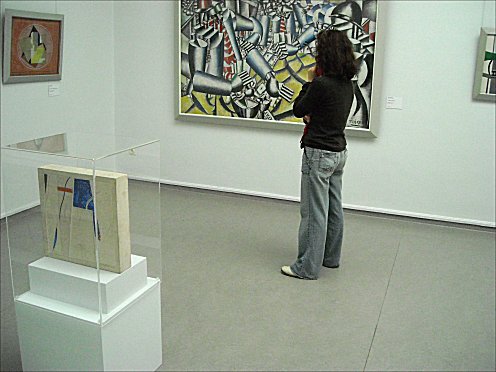
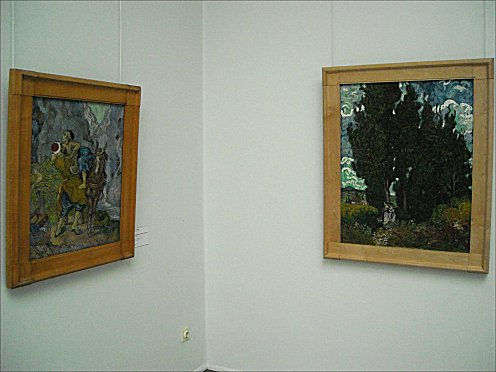
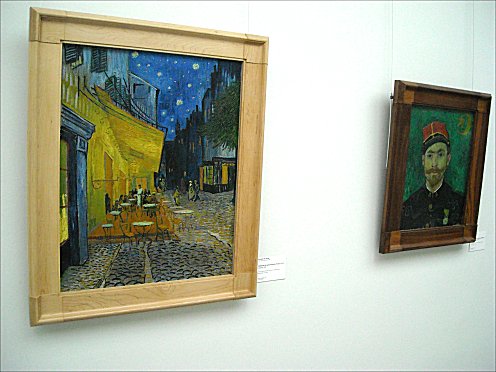


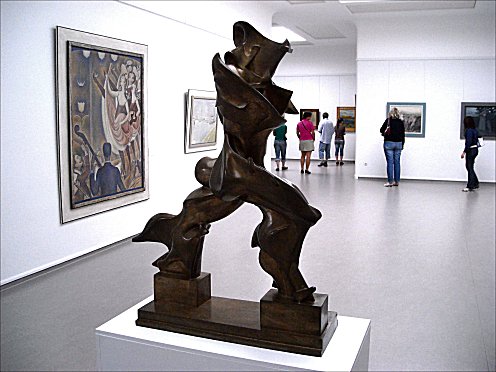
Museumcollectie Museum Kröller-Müller
Het Museum Kröller-Müller herbergt een wereldberoemde collectie schilderijen en tekeningen van Vincent van Gogh. Daarnaast is er een belangrijke collectie moderne en hedendaagse kunst waaronder ruim 400 werken (internationale avantgarde uit de jaren ’60 tot heden) uit de voormalige collectie Visser. Waaronder werken van Anselm Kiefer, Richard Long en Ellsworth Kelly.
In 2005 werd een legaat, bestaande uit 28 werken uit de nalatenschap van Rudi van Deventer aanvaard.
Verder zijn er werken van onder meer:Hans Baldung Grien, Rudolf Belling, Joseph Beuys, Constantin Brâncuşi, Lucas Cranach de Oude, Pieter Claesz ,Theo van Doesburg, James Ensor, Juan Gris, Isaac Israëls, Bart van der Leck, Fernand Léger, Marino Marini, Piet Mondriaan, Pablo Picasso, Odilon Redon, Kurt Schwitters, Georges Seurat, Charley Toorop, Jan Toorop en herman de vries.
Kröller-Müller Museum
Houtkampweg 6
6731 AW Otterlo
• photos fleursdumalmagazine
More in: Architecture, Art Criticism, Design, Eva Hesse, Exhibition Archive, FDM Art Gallery, Gerrit Rietveld, herman de vries, Jan Schoonhoven, Jean Tinguely & Niki de Saint Phalle, Joseph Beuys, Karel Appel, Kurt Schwitters, Land Art, Marcel Broodthaers, Pablo Picasso, Panamarenko, Piet Mondriaan, Richard Long, Theo van Doesburg, Vincent van Gogh, Yves Klein
Thank you for reading Fleurs du Mal - magazine for art & literature